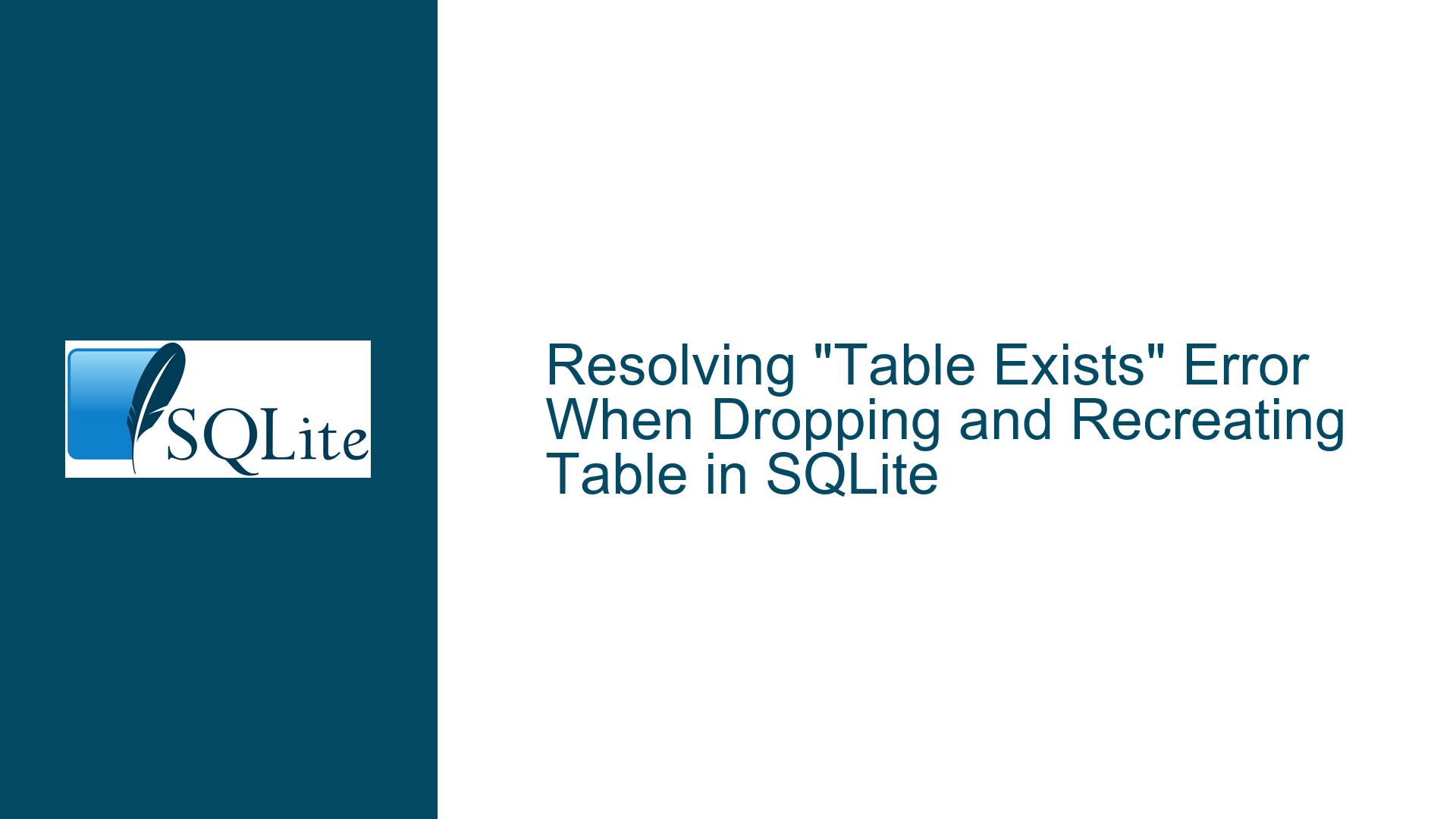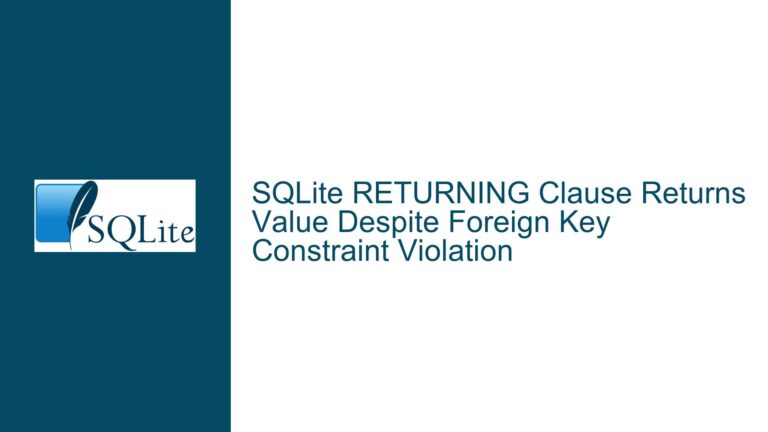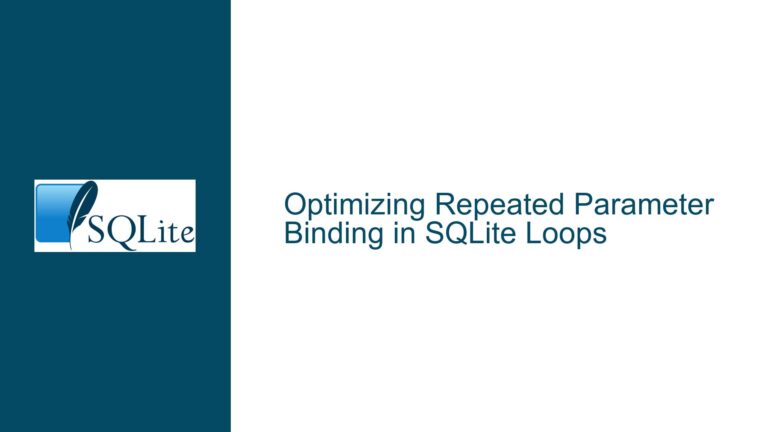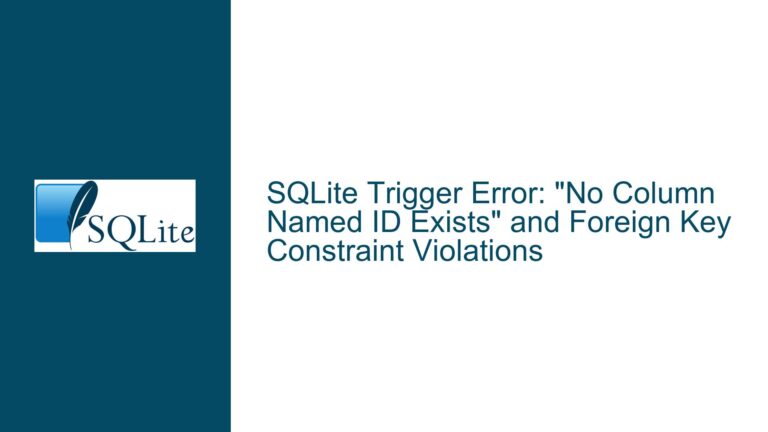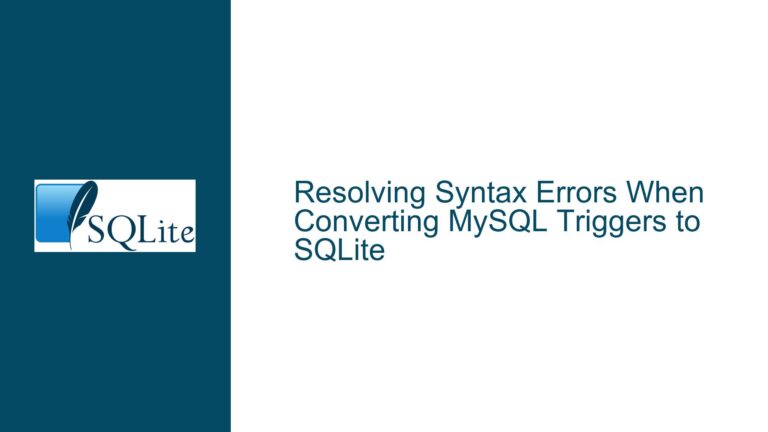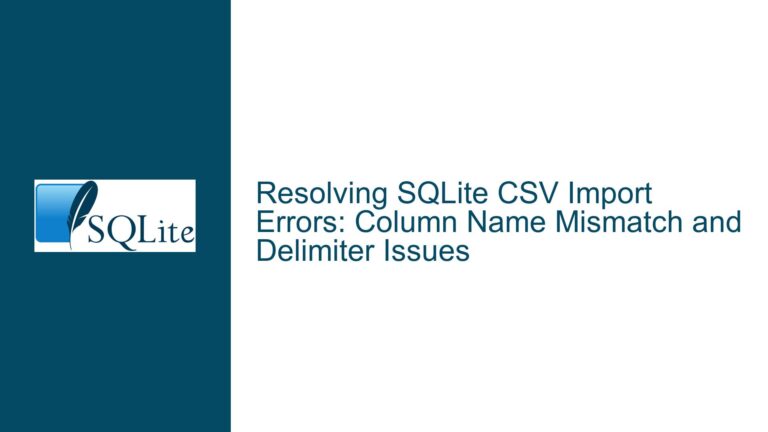Resolving “Table Exists” Error When Dropping and Recreating Table in SQLite
Issue Overview: DROP TABLE and CREATE TABLE Sequence Fails with "Table Already Exists"
When working with SQLite databases, a common task during schema modification involves dropping a table and recreating it with an updated structure. This process is straightforward when executed correctly: the DROP TABLE statement removes the existing table, and the subsequent CREATE TABLE statement defines a new table with the desired schema. However, users occasionally encounter an error indicating that the table "already exists" even after executing a DROP TABLE command. This contradiction arises due to nuances in how database tools execute SQL statements, SQLite’s transactional behavior, and tool-specific handling of schema changes.
In the scenario described, a user attempted to drop a table named payments and immediately recreate it with additional columns. The SQL script included two statements:
DROP TABLE payments;
CREATE TABLE payments (...);
Despite the apparent correctness of this sequence, executing these statements in SQLite Studio resulted in an error: "table ‘payments’ already exists." This error suggests that the CREATE TABLE statement was executed while the table still existed in the database schema, implying that the preceding DROP TABLE either failed or was not effectively applied before the CREATE TABLE operation.
Key observations include:
- The
DROP TABLEcommand was syntactically valid and targeted an existing table. - No data or external dependencies (e.g., foreign keys, triggers) were present to interfere with the table deletion.
- The error persisted even when wrapping the statements in a transaction.
- The issue resolved when using a different tool (DB Browser for SQLite) or executing the statements as a single batch in SQLite Studio.
This behavior highlights a disconnect between the user’s expectation of atomic schema modification (drop followed by immediate recreate) and the actual execution flow enforced by the database tool. The root cause lies in how the tool manages statement execution, transaction boundaries, and schema validation.
Possible Causes: Tool Behavior, Transaction Handling, and Execution Flow
1. Tool-Specific Execution of SQL Statements
Database management tools like SQLite Studio often provide features to execute SQL scripts, but their internal logic for processing multi-statement scripts can vary. A critical factor is whether the tool executes statements individually or as a single batch.
Individual Execution: If the tool parses and executes each statement separately (e.g., splitting statements at semicolons and running them sequentially), the
DROP TABLEandCREATE TABLEoperations may be treated as independent commands. If the tool commits changes after each statement (auto-commit mode), theDROP TABLEis finalized before theCREATE TABLEruns. In this case, theCREATE TABLEshould succeed unless theDROP TABLEfailed. However, if the tool erroneously reorders statements or validates theCREATE TABLEbefore executing theDROP TABLE, the "table exists" error occurs.Batch Execution: Tools that support batch execution send all highlighted or selected statements to the database engine at once. SQLite processes these statements sequentially within a single connection session, ensuring the
DROP TABLEis applied before theCREATE TABLEis parsed. This approach avoids the "table exists" error.
2. Transaction Handling and Implicit Commits
SQLite enforces strict transactional semantics for Data Definition Language (DDL) statements like DROP TABLE and CREATE TABLE. Specifically:
Implicit Commits: DDL statements automatically commit any active transaction. For example, if a user wraps
DROP TABLEandCREATE TABLEin a transaction usingBEGIN TRANSACTION; ... COMMIT;, theDROP TABLEcommand commits the transaction immediately. TheCREATE TABLEthen executes outside the transaction. If theCREATE TABLEfails, there is no rollback mechanism to recover the original table.Misconceptions About Atomicity: Users may assume that wrapping DDL statements in a transaction ensures atomicity (i.e., either both statements succeed or neither does). However, due to implicit commits, this is not possible in SQLite. Once
DROP TABLEexecutes, the transaction is irreversibly committed, and the table is permanently removed.
3. Schema Validation and Caching by the Tool
Database tools often cache schema information to improve performance. If a tool validates the CREATE TABLE statement against its cached schema (which still includes the table) before executing the DROP TABLE, it may erroneously report an error. This is a tool-specific bug, as SQLite itself validates the schema in real time during statement execution.
4. Syntax Errors or Ambiguities in the CREATE TABLE Statement
Although the reported error focused on the table’s existence, subtle syntax issues in the CREATE TABLE statement could cause failures that are misinterpreted by the tool. For example:
Non-Standard Column Types: The
budget_key [INTEGER UNSIGNED]declaration uses square brackets, which are not standard SQL syntax. SQLite ignores non-standard type qualifiers (e.g.,UNSIGNED) and treats[INTEGER UNSIGNED]asINTEGER. While this does not produce a syntax error, some tools may parse the statement incorrectly.Reserved Keywords: Using reserved keywords (e.g.,
date,key) as column names without proper escaping can lead to parsing errors.
Troubleshooting Steps, Solutions, and Fixes
1. Ensure Statements Are Executed as a Single Batch
Most database tools allow users to execute multiple statements as a single batch. This ensures sequential execution without intermediate commits or validation steps.
- In SQLite Studio: Highlight both the
DROP TABLEandCREATE TABLEstatements before executing them. This forces the tool to send both commands to SQLite in one batch. - In Command-Line Tools: Use the
.readcommand to execute a script file containing both statements. - Programmatic Execution: When using programming languages (e.g., Python, Java), execute both statements in a single
execute()call or within the same connection session.
2. Use a Database Tool with Reliable Batch Execution
Switch to a tool that handles multi-statement scripts robustly:
- DB Browser for SQLite (DB4S): Execute the entire script in the "Execute SQL" tab. After execution, click Write Changes to commit modifications.
- VS Code Extensions: Use extensions like SQLite or SQLTools with proper multi-statement support.
- Command-Line Interface (CLI): SQLite’s native CLI (
sqlite3) processes scripts line-by-line without unexpected validation.
3. Avoid Transactions for DDL Statements
Recognize that transactions cannot atomicity for DDL operations in SQLite. Instead, rely on sequential execution:
-- No transaction wrapper; DROP TABLE auto-commits
DROP TABLE payments;
CREATE TABLE payments (...);
4. Verify the Success of the DROP TABLE Operation
Before recreating the table, confirm that the DROP TABLE command succeeded:
- Check Tool Logs: Review execution logs for errors during the
DROP TABLE. - Manual Verification: Run
.tablesin the CLI or refresh the schema browser in GUI tools to confirm the table’s absence.
5. Disable Foreign Key Constraints and Triggers
If the table is referenced by foreign keys or triggers (even in empty databases), DROP TABLE may fail unless constraints are disabled:
PRAGMA foreign_keys = OFF;
DROP TABLE payments;
PRAGMA foreign_keys = ON;
CREATE TABLE payments (...);
6. Update the Tool or Adjust Settings
Outdated database tools may contain bugs related to schema changes. Update to the latest version or adjust settings related to:
- Auto-Commit: Disable auto-commit to group statements (not applicable for DDL due to implicit commits).
- Statement Delimiters: Ensure semicolons are recognized as statement terminators.
7. Validate the CREATE TABLE Syntax
Use SQLite’s sqlite3 CLI to isolate syntax issues:
sqlite3 test.db
sqlite> DROP TABLE payments;
sqlite> CREATE TABLE payments (...);
If the CLI succeeds, the original tool likely has a parsing or execution bug.
8. Handle Tool-Specific Schema Caching
Refresh the tool’s schema cache after DROP TABLE to prevent false positives during CREATE TABLE validation. Look for options like Refresh Schema, Reconnect, or Reload Database in GUI tools.
9. Consider Schema Migration Alternatives
Instead of dropping and recreating tables, use ALTER TABLE to add columns (if supported). SQLite’s ALTER TABLE has limitations but works for simple changes:
ALTER TABLE payments ADD COLUMN new_column INTEGER;
For complex changes, create a new table, copy data, and rename the table:
CREATE TABLE payments_new (...);
INSERT INTO payments_new SELECT * FROM payments;
DROP TABLE payments;
ALTER TABLE payments_new RENAME TO payments;
10. Review SQLite Documentation and Community Resources
SQLite’s official documentation clarifies transactional behavior and DDL limitations. Community forums and repositories provide tool-specific workarounds.
By methodically addressing tool behavior, execution flow, and SQLite’s transactional semantics, users can resolve "table already exists" errors and achieve reliable schema modifications.
